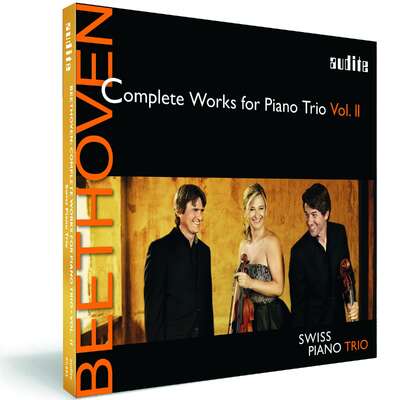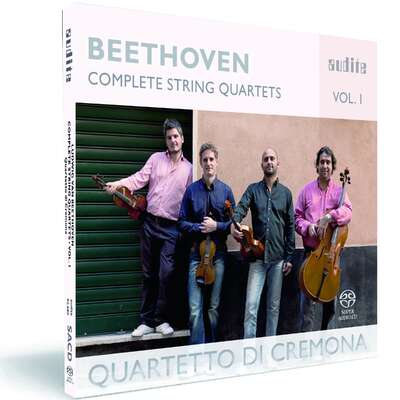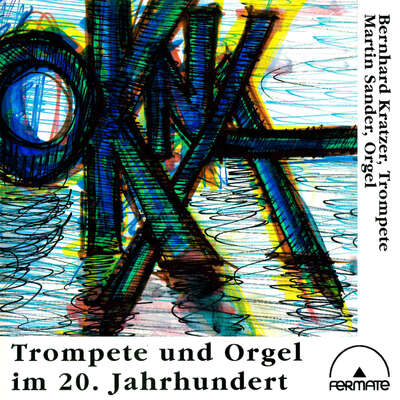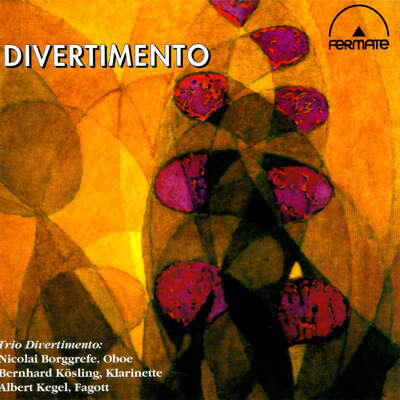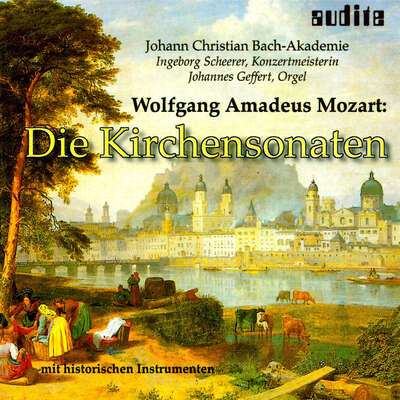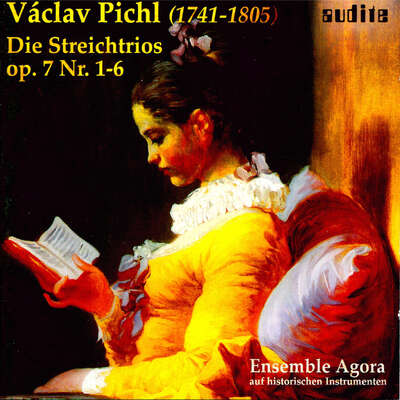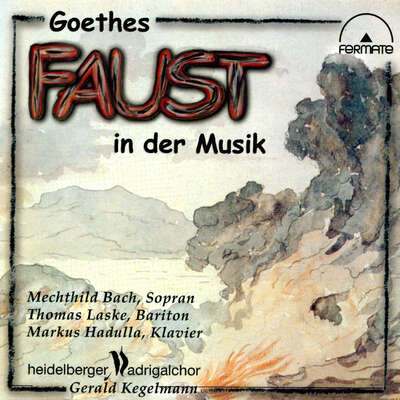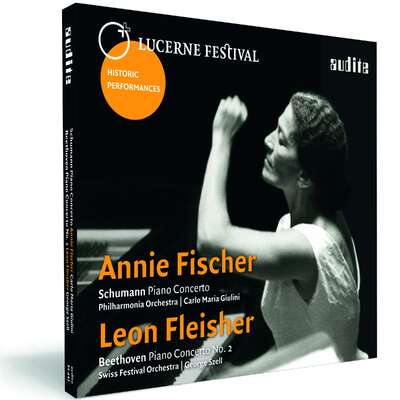
The concept of the stimulating contrast between early and later trios is being continued in the second part of the complete edition of Beethoven‘s Piano Trios: the early Trio, Op. 1 No. 2 and the Trio, Op. 70 No. 1 composed 13 years later convey an impression of Ludwig van Beethoven‘s widely differing compositional concepts and bear witness to the inexhaustible variety of his musical ideas.more
"Das Swiss Piano Trio spielt bereits 17 Jahre zusammen. Dieses Aufeinander-eingespielt-Sein hört man auf der neuen CD als glasklares Zusammenspiel, als extrem aufmerksames aufeinander Reagieren mit taufrischem Klangresultat in präzis durchdachter Gesamtinterpretation." (Tagblatt Online)
Details
| Ludwig van Beethoven: Complete Works for Piano Trio - Vol. 2 | |
| article number: | 97.693 |
|---|---|
| EAN barcode: | 4022143976932 |
| price group: | BCA |
| release date: | 25. September 2015 |
| total time: | 61 min. |
Bonus Material
Informationen
After the successful beginning of the new complete edition of the Beethoven Piano Trios with the Swiss Piano Trio, audite now presents the second part of the series. The concept of the stimulating contrast between early and later Trios is being continued.
In the early Piano Trio, Op. 1 No. 2, Ludwig van Beethoven turns to formal concepts of the symphony and string quartet, as he does in the other two Lichnowsky Trios. He incorporates the contrapuntal compositional techniques that he had studied extensively with Johann Georg Albrechtsberger concurrently with the composition of the Trios. With the Piano Trio in D major, Op. 70 No. 1, composed 13 years later, Beethoven embarks on the path of a consistent individualisation of each work, for example through the use of novel compositional techniques and detachment from fixed generic forms. The central second movement creates a sombre mood through strong effects of contrast in the harmony and melody. The eerie sound effects unheard of until this time, only made possible by the advances made in instrument manufacturing around 1800, substantiated the name "Ghost Trio" added posthumously.
Both works convey an impression of Ludwig van Beethoven's widely differing compositional concepts and bear witness to the inexhaustible variety of his musical ideas.
Reviews
Fanfare | August 2016 | Paul Orgel | August 1, 2016
The G-Major Piano Trio is one of Beethoven’s “early comedies,” to use Donald Francis Tovey’s wonderful phrase, yet it’s not until theMehr lesen
The group credits Menachem Pressler, among others, with having given them “artistic impulses,” but a quick listen to the Beaux Arts Trio’s recordings of this work reveals the benefits of sharper articulation, crisper delineation of rhythm, and lovelier “singing” tone—I’m thinking of the violin in the op. 1/2 slow movement—while maintaining the style’s basic elegance. Violinist Angela Golubeva plays with a deft bow, and but her tone is small, and in some lyrical moments rather unlovely.
In the fast outer movements of the “Ghost” Trio, the Swiss players sound fully engaged and play with admirable drive and dynamism, but their slightly faster than usual tempo for the Largo assai ed espressivo deprives the slow movement of its initial stillness and mystery. As in two other notable slow movements that share its key of D Minor, the Largo e mesto of the Piano Sonata, op. 10/3, and the Adagio con molto sentimento d’affetto of the Cello Sonata, op. 102/2, I believe that Beethoven challenges performers here to take the slowest possible tempo that can be sustained.
The Swiss Piano Trio is one of a number of successful European piano trios with widespread concert engagements, high level teaching appointments, summer festival residencies, and a connection with a fine label (Audite). This is the second volume in a projected complete Beethoven trio cycle, and though the playing is polished and technically competent, there are so many better competing recordings of these pieces that I can’t recommend it. The recorded sound is excellent; the booklet notes are pedantic.
BBC Radio 3 | Saturday 13th February 2016, 10.20 am | Andrew McGregor | February 13, 2016
BROADCAST
New Releases: Beethoven Chamber Music
Harriet Smith reviews recent sets of Beethoven chamber musicMehr lesen
Record Geijutsu | February 2016 | February 1, 2016
Japanische Rezension siehe PDF!Mehr lesen
Tagblatt Online
| 21. Januar 2016 | Martin Preisser | January 21, 2016
Taufrisch und sehr nuancenreich
Das Swiss Piano Trio legt seine zweite CD mit Klaviertrios von Ludwig van Beethoven vor. Die drei Musiker leben ihre Erfahrung als lange aufeinander eingespieltes Ensemble mitreissend und mit Leidenschaft aus: Ein Beethoven zum (Wieder-)Entdecken.
Das Swiss Piano Trio spielt bereits 17 Jahre zusammen. Dieses Aufeinander-eingespielt-Sein hört man auf der neuen CD als glasklares Zusammenspiel, als extrem aufmerksames aufeinander Reagieren mit taufrischem Klangresultat in präzis durchdachter Gesamtinterpretation.Mehr lesen
Das Orchester | Januar 2016 | Jörg Loskill | January 1, 2016 | source: http://www.dasor...
Das Trio ist bestens aufeinander eingestimmt, es beherrscht den klassischen Geist auf dem Weg zur frühen Romantik. [...] Das ist bei dieser CD eben kraftvoller und ausdifferenzierter Beethoven!Mehr lesen
www.musicweb-international.com | Thursday December 17th | David Barker | December 17, 2015
As you see, this is the second volume of a planned five from the Swiss Piano Trio and Audite. The first CD was released at the start of this year, andMehr lesen
It was probably inevitable, given the Trio’s longevity that they find themselves drawn to recording Beethoven, but they do find themselves in a very large pool with some very big fish. My benchmark is the Florestan Trio (Hyperion CDS44471/4) with Trio Wanderer (Harmonia Mundi HMC902100.3) very close behind. I wrote a comparison of the two earlier in the year (review). There are, of course, many other choices, the most obvious being the Beaux Arts Trio, which garnered most nominations in MWI Recommends for the Archduke Trio. You might also read my comments in the "B" section of my Piano Trio Survey. For the two trios presented here, Arkivmusic lists more than 30 of Op. 1/2 and 60 of the Ghost.
The Ghost trio is considered to be one of the two great works Beethoven wrote for this combination, the Archduke being the other. While this is undoubtedly true, I have a great affection for the second of the Op. 1 set, and find it makes a useful yardstick for judging performances. As an early work, it has a Haydnesque character which the Swiss Piano Trio’s rather heavy touch doesn’t capture. Their scherzo is too slow, and the joyously playful finale doesn’t quite reach the standards of the Florestans and Wanderers. It is an approach closer to that more Romantic one of Ashkenazy, Perlman and Harrell. Perhaps that is your take on this work; if so, you should enjoy this more than I did. Not surprisingly this approach suits the later work more. It is a good performance of the Ghost, though not sufficient to change my preferences, and the Presto finale is still too intense and over-dramatised for me.
The notes are informative, the musical analysis not too academic. It is pleasing to see that Audite is starting to provide their booklets with downloads. The sound quality is a little resonant at high levels, but the sound of each instrument is very good.
This hasn’t impressed me sufficiently to seek out the first Volume 1, but if you like your Beethoven trios to be dramatic rather than elegant, then you may well want both volumes. It must be said that five full-priced CDs – they are including the triple concerto – will be rather expensive, when compared to existing “complete” sets.
www.pizzicato.lu | 20/10/2015 | Guy Engels | October 20, 2015 Konsequente Fortsetzung
Mit dem Trio Nr. 2 G-Dur op. 1,2 und dem späteren Trio Nr. 5 D-Dur, op. 70,1 wartet das ‘Swiss Piano Trio’ auf seiner zweiten Etappe durchMehr lesen
Klassisch ist hier keinesfalls gleichzusetzen mit bieder, poliert, ohne Ecken und Kanten. Geschliffen ist allenfalls der Klang, der ebene Duktus der Tongebung. Darüber hinaus bietet uns das ‘Swiss Piano Trio’ im G-Dur-Trio ein äußerst lustvolles Musizieren, romantisch und stürmisch im Eingangs-Allegro und furios, mitreißend durch die Betonung unscheinbarer Motivstrukturen im Finale presto.
Im reiferen, ausdrucksstärkeren 5. Klaviertrio unterstreichen die Interpreten ihren intuitiven Sinn für Spannung und Rhetorik. Die klassische Leichtigkeit weicht hier einer wesentlich expressiveren Klangsprache – strenger, herber und kraftvoller im Ton – die dennoch in der klassischen Klangrede des ‘Swiss Piano Trio’ ein passendes Sprachrohr findet.
Winningly expansive and effective performances, marked by eloquence and vividness.
F. F. dabei | Nr. 22/2015 (17.-30. Oktober) | October 17, 2015
Das Schweizer Klaviertrio legt den zweiten Teil der Reihe vor und setzt das Konzept der Gegenüberstellung früher und später Trios fort [...] Beide Werke vermitteln einen Eindruck der unterschiedlichen Kompositionskonzepte Beethovens und zeugen von seiner Ideenvielfalt.Mehr lesen
News
Zwischen den beiden Beethoven-Trios, zwischen No. 2 und No. 5, liegen knapp 15...
The G-Major Piano Trio is one of Beethoven’s “early comedies,” to use...
As you see, this is the second volume of a planned five from the Swiss Piano...
Das Schweizer Klaviertrio legt den zweiten Teil der Reihe vor und setzt das...

